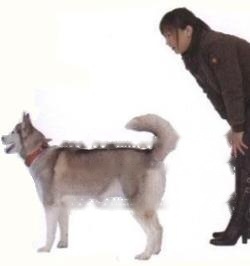Dogs are lively and active pets. Dog families know that dogs can be easily injured, happy or unhappy. Get emotional easily, which can lead to injury. Therefore, it is necessary for parents to master some first-aid knowledge of dogs, and give treatment to the dog at the first time of injury, which can prevent the injury from aggravating.

Bleeding: The primary way to stop or reduce the amount of bleeding is to apply pressure until your dog is seen by a veterinarian .. There are several ways to apply pressure, depending on the situation. You can apply pressure directly on the wound with your fingers or cotton pads, or apply pressure on the pressure point at the nearest wound location. You can also wrap the wound with a bandage and then apply pressure or use a tourniquet. Elevating the injured area can also help stop the bleeding, if possible.
Cuts: Clean the wound thoroughly, check for grit or shards of glass and seek veterinary assistance.
Frightened: Take your dog to a calm and warm environment to avoid being startled again. Carefully monitor its condition and consult a veterinarian.
Twitching: Watch your dog carefully and don't try to stop it from biting its tongue. If an animal's airway is blocked by something, do not rush into its mouth while the animal is conscious. Check your surroundings, and watch out for animals that can be dangerous (and animals that can be dangerous to you). Contact a veterinarian for assistance, and watch out for some recent incidents, such as poisoning, that have occurred in dogs.
Fractures: Immobilization of the fractured area can be difficult and must be handled by a professional veterinarian. Although not easy, you should try to minimize movement of the animal's fractured area.
Drowning: Pick up the animal with its head down, which may allow some of the water in the trachea to escape.
Foreign body in the body: Try to locate the foreign body in the animal. These foreign bodies may be hidden in many places in the body. A foreign object stuck in the mouth, eyes, or ears. However, you should always contact your veterinarian for assistance if possible.
Poisoning: Keep away from poison to prevent further poisoning (if poison touches the skin surface, it should be washed with water immediately). Be careful not to accidentally come into contact with the poison, wrap up some poison samples, and bring the dog with the poison sample to the veterinary clinic.
Burns, scalds: Both heat and chemicals can burn and scald the body. If a dog is burned or scalded by heat (fire or hot water), as long as it is not in an extreme In case of panic and severe pain, rinse the affected area with cold water to cool it down. Then wrap it in a clean plastic bag or film. Chemicals may interact with water. If in doubt, take the animal to a veterinarian for treatment, reducing the burn is always the best approach.
Overheating, heat stroke: When exercising your dog, keep an eye on its condition and breed characteristics, and prepare water for the dog. If your dog is wheezing, keep an eye out for overheating. Because some types of masks can prevent dogs from dissipating heat, it is not suitable for them to wear masks when exercising. Overheating can lead to heat stroke, when the animal's body cannot dissipate heat and it is life-threatening. If your dog is overheating or suffering from heat stroke, here are some things you can do-
- wet or shower the dog
- give it thirsty water
- Wrap a water block around the dog's body but do not touch its skin
- take the dog to a shaded area
- turn on the fan/air conditioner to cool the dog
- Let the dog rest
![[Dog Training 5] The training method of pet dog dining etiquette](/static/img/12192/12192_1.jpg)




